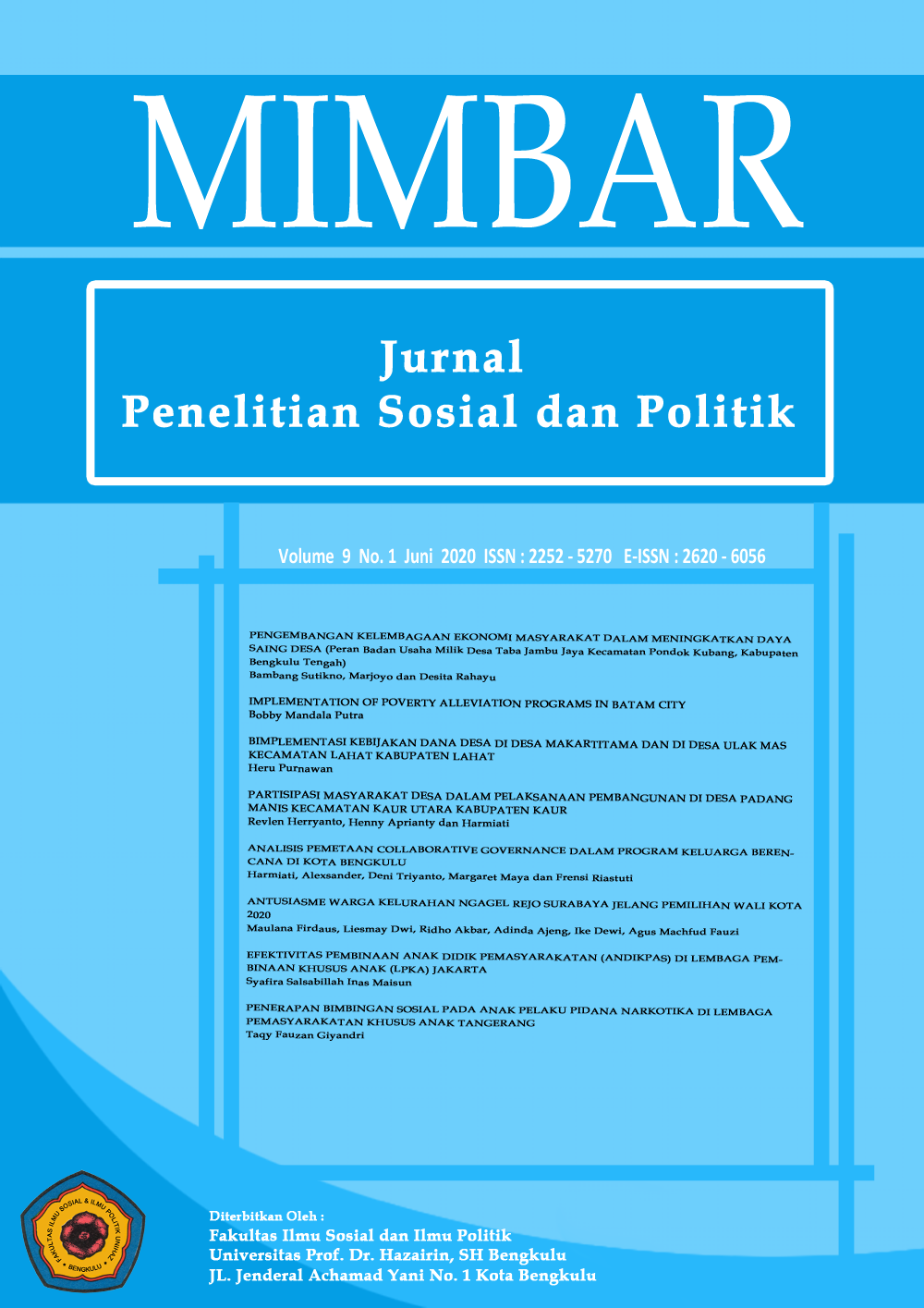IMPLEMENTATION OF POVERTY ALLEVIATION PROGRAMS IN BATAM CITY
DOI:
https://doi.org/10.32663/jpsp.v9i1.1160Kata Kunci:
Poverty Alleviation;, Program Implementation;, Poverty in Batam City;, Public PolicyAbstrak
Poverty is still one of the public problems which are a serious concern of the Indonesian government. In March 2017 it was learned that the number of poor families in Indonesia decreased by 1.19 million. Nevertheless, the number of poor people in Indonesia is still more than the population of Australia. As of the end of 2017, the number of poor people in Indonesia was 26.58 million or 10.12 percent of the national population. In contrast with the number of poor people nationwide that has decreased, in Batam City, the number of poor people has increased. Based on the Integrated Database in 2017 the number of poor people in Batam City was 28,674 households. Although there is a high level of interest in the issue of poverty, unfortunately, the number of studies related to poverty issues is still limited, especially research on poverty alleviation in Batam from a public policy perspective. This study aims to describe and analyze the implementation of poverty alleviation programs in Batam in 2015-2018. This research was conducted using a qualitative descriptive research design. The implementation of poverty alleviation programs in this study was assessed using the George C. Edward III implementation model. The results showed that poverty alleviation programs in Batam City had been implemented quite well. Based on the communication indicators, it is known that the poverty alleviation program implementor has known and understood what the goals and targets of the program are; based on resource indicators it is known that the poverty alleviation program implementor still lacks both human and financial resources; based on indicators of disposition it is known that the poverty alleviation program implementor in general already has a commitment, honesty, and democratic attitude; based on bureaucratic structure indicators it is known that the poverty alleviation program already has standard operating procedures and is quite well implemented and the bureaucratic structure is quite liquid and there have not been any obstacles to coordination and diffusion of accountability among organizational units. The results of this study are expected to be input for the Central Government and Regional Governments in evaluating the implementation of poverty alleviation programs and can be used as material for consideration for stakeholders in formulating poverty alleviation programs
Unduhan
Referensi



